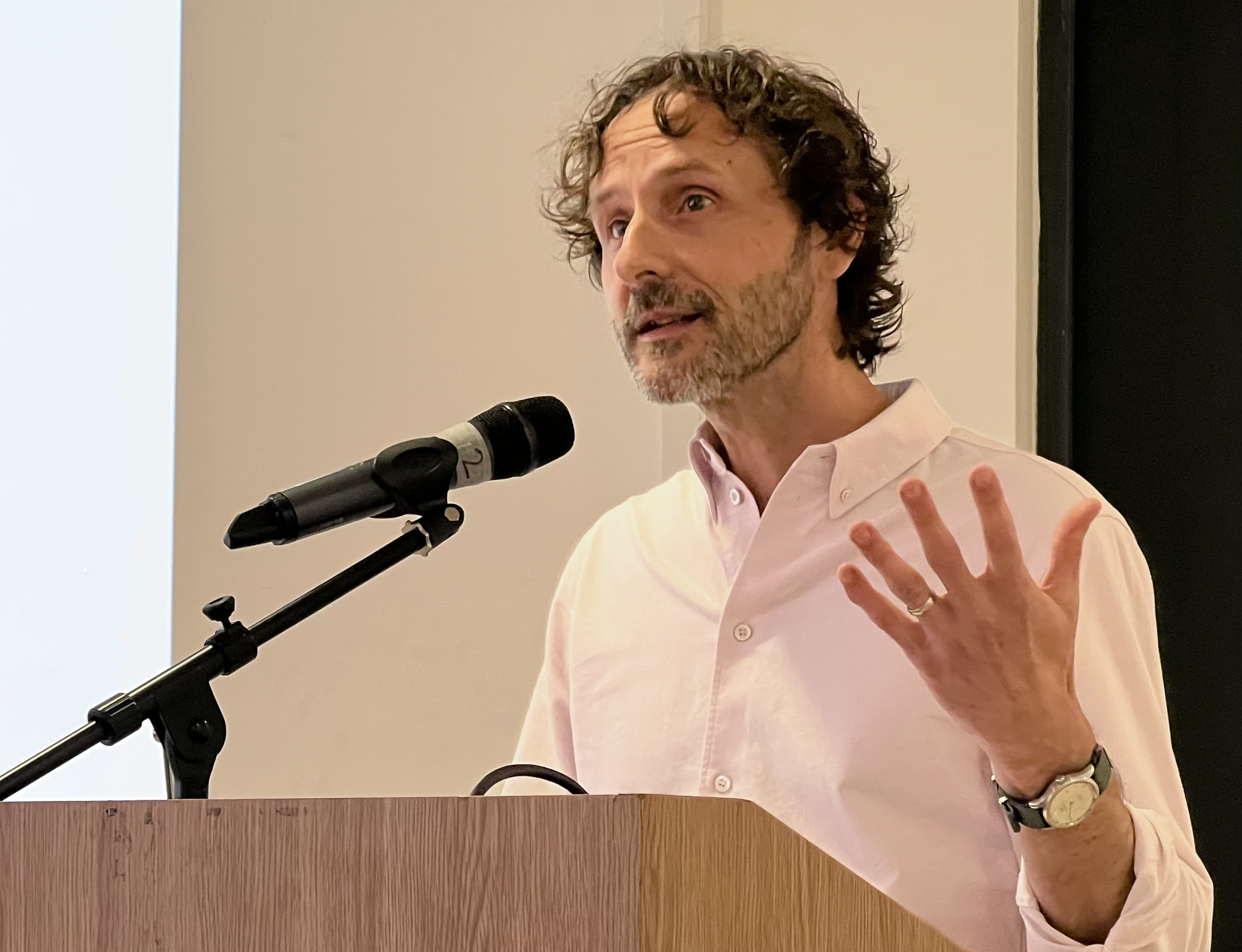Design process hacks
In this workshop, Alastair Lee explored the common impediments to the perfect design process and shared his hacks for what to do when you can’t do what you’re supposed to do…
The idea from this session came from a mentoring session, where Alastair’s mentee asked what should we do when we can’t do what we’re supposed to do.
What we are supposed to do, looks something like this:
- Define the outcome
- Research needs and constraints
- Prototype and test solutions
- Deliver “MVP”, monitor, iterate
- Repeat
Whilst this might represent our “perfect” design process, it is just a plan, and as Mike Tyson said “Everyone has a plan until they get punched in the mouth”.
In this session, Alastair shared the challenges associated with the perfect design process, the principles and tactics that we can apply when we can’t follow the perfect process.
To kick us off, Alastair asked attendees to brainstorm a list of challenges to the design process – practical barriers rather than big cultural challenges. Examples included:
- I want to know what to do when… “MVP” ends up as “final” – after no iteration
- I want to know what to do when… we don’t have enough detail from users in the research phase
- I want to know what to do when… we don’t have access to the right users
- I want to know what to do when… teams are feature-focussed rather than outcome-focussed
Next, we pooled our challenges in groups, chose two challenges each to prioritise, then voted on which we wanted to discuss.
Alastair shared some principles that might be helpful when approaching these challenges:
Principle 1: Be stoic
The guiding principle for stoicism is that tranquility is the goal. You can do this by focussing on what you can control, rather than the things you can’t control. We can only choose our response.
Principle 2: Think like a chef
Chefs really understand what they are doing with food – the flavours, the processes etc – without a recipe. By contrast, cooks need to follow recipes. We need to become more like chefs and understand what we can substitute for the perfect ingredient.
He urged us to read about the design processes to make sure we really understand what they are trying to achieve so you can think about alternative ways to achieve the same end result.
Principle 3: Skim. Don’t skip
You need to do something at each step in the design process, don’t skip steps altogether.
Principle 4: Highlight assumptions and risks
The minimum you can do in a tricky situation is to highlight our assumptions. Sometimes we have to make assumptions, but we need to make them consciously in a shared way.
Alastair recommended asking “What would have to be true for this to work?”, then play the responses back to the stakeholders to clarify their thinking. You can use a map to chart the impact of being wrong vs the likelihood of being wrong to help the stakeholders assess the risks in their assumptions.
This method helps others to understand the design process, makes them think and creates useful conversations, and shares responsibility for the assumptions.
Principle 5: Build your case
Gather evidence to support your case for a better process next time by asking questions about the process so you can build a more compelling story for those presenting you with challenges.
In our next workshop activity, Alastair asked attendees to create a “hacktion” plan for one of their challenges.
Examples included:
Challenge: When a client or stakeholder ignores best practice and has a specific view of what they want to do – they may have a solution or approach in mind, that places constraints on you.
Hacktion Plan: Understand the argument they are making, then use research to give their idea a chance to succeed and use that to build credibility to do things better in the future.
Challenge: Client is feature-focussed rather than outcome-focussed. They just want design to create screens for them.
Hacktion Plan: Use assumption mapping, listen to their solutions and then write a problem statement based on that to help them explore their idea more fully.
Challenge: Business requirement focussed on technology replacement not users
Hacktion Plan: Focus on education to encourage client to look at other options and highlight pain points to raise awareness.
Challenge: Development team pushing back against user research results. If they don’t believe in user research, they will drag their feet.
Hacktion Plan: Focus on the outcome, involve the development team in the user research process to give them a sense of ownership, and do A/B testing with their ideas (they might be right!).
Challenge: No time to iterate after MVP.
Hacktion Plan: Highlight assumptions and risks early to make sure the client is happy with the lack of iteration.
Alastair’s parting thought was that if you apply some of these tactics around ‘making do’, making decisions transparent and talking about how to do things better next time so we all get the outcomes that we want. If you do this repeatedly, you build a circle of influence and will yield results that just moaning about it will not. Hackers will always win!
About Alastair
Alastair is a seasoned product strategy and design consultant, and managing director at the design firm Panda.
He has over 20 years of experience in digital product design and development. His early career was spent in product management roles at the BBC and Time Out. In 2012 he became a consultant with a focus on product discovery and design. He’s worked with clients as diverse as the Cabinet Office, Zurich Insurance, Octopus Energy and Versus Arthritis alongside a variety of SMEs, startups and scaleups.
He lives in Bath with his wife Katharine and their three children. When time permits he likes to tinker with electronic music and play his cherished djembe drum.



